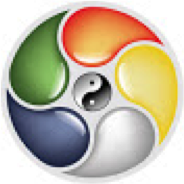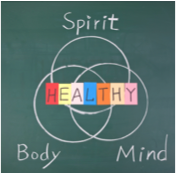 Shiatsu, meaning “finger pressure,” is the practice of applying thumbs, fingers, palms or feet to pressure points, or meridians, as they’re called in ancient Asian medicine. Aside from the pressing, this type of treatment also focuses on stretching limbs and opening joints. As a type of healing therapy, it produces an effect of deep relaxation, increases energy levels and brings a state of balance to the body, among many other things. As several clients say, it helps them feel more “grounded, centered and self-aware.”
Shiatsu, meaning “finger pressure,” is the practice of applying thumbs, fingers, palms or feet to pressure points, or meridians, as they’re called in ancient Asian medicine. Aside from the pressing, this type of treatment also focuses on stretching limbs and opening joints. As a type of healing therapy, it produces an effect of deep relaxation, increases energy levels and brings a state of balance to the body, among many other things. As several clients say, it helps them feel more “grounded, centered and self-aware.”
Shiatsu is a practice based on the traditions of ancient Asian medicine. The theory behind Shiatsu is that our bodies are made up of energy, called Qi, and this energy can get blocked and cause suffering within the body and mind. Shiatsu helps to remove blockages by clearing channels and acupoints, which balances the Qi and eases the body and mind. When Qi is balanced, healing occurs. The applied pressure stimulates both the nervous and immune systems, providing relief, while also restoring the circulatory system, improving blood flow.
 A current client, named Christina G., has been receiving Shiatsu for approximately 18 months, at a rate of once every two to four weeks. At the start of her treatments, Christina was seeking the following:
A current client, named Christina G., has been receiving Shiatsu for approximately 18 months, at a rate of once every two to four weeks. At the start of her treatments, Christina was seeking the following:
- Regularity in her menstrual cycle,
- An increase in energy and stamina,
- A decrease in daily anxiety and stress, and
- An improved awareness and connection to her intuition.
Here are the results she experienced over the course of the first few months working together and then ongoing over the last 18 months:
- Menstrual Cycle: Christina experienced better regularity and less blood clotting in the first few months of treatment. Within four months, she experienced a brighter, healthier color of blood and better flow in general, which she hadn’t experienced in years.
- Energy and Stamina: Christina experienced more energy immediately following each treatment along with a “sense of calm and strength” that would endure for several days following treatment. In conjunction with her bi-weekly meditation and daily supplementation, she has experienced an increase in energy and stamina over the last 18 months and “it continues to improve everyday.”
- Anxiety and Stress: Within the first few treatments, Christina experienced less anxiety and stress in her daily life. She also worked to manage her anxiety and stress on her own based on suggested exercises and regular reassessments, including identifying areas for
- Intuition: After the first year of treatment, Christina wanted to connect to and be more aware of her intuition. In each session we reviewed progress she made, and feedback in the form of exercises was given for further improvement. She now says she “feels more connected to her intuition and is now able to look inside for answers to questions and for direction.”
 Christina G. experienced the benefits of Shiatsu in every area that she was seeking assistance and vitality. It is through client experiences like these that Shiatsu proves time and time again to be a viable and effective treatment for those experiencing many types of mental or physical suffering. What once began as a treatment for simple muscular tension when it was first introduced to Western medicine has become something much more integrative. The benefits of Shiatsu have become more apparent, and it is now used for treating a variety of ailments and issues. These include the following:
Christina G. experienced the benefits of Shiatsu in every area that she was seeking assistance and vitality. It is through client experiences like these that Shiatsu proves time and time again to be a viable and effective treatment for those experiencing many types of mental or physical suffering. What once began as a treatment for simple muscular tension when it was first introduced to Western medicine has become something much more integrative. The benefits of Shiatsu have become more apparent, and it is now used for treating a variety of ailments and issues. These include the following:
- Overall Weakness & Fatigue: Shiatsu can restore and maintain the body’s energy, helping those who suffer from overall weakness and fatigue.
- Muscle Pain and Rheumatoid Arthritis: Shiatsu is frequently used to alleviate the muscle and joint pain associated with arthritis.
- Injury Recovery: Shiatsu can aid in the recovery from sprains, fractures and other injuries.
- Migraine Headaches: Shiatsu helps relieve headaches and migraines by relaxing the body and increasing blood flow and circulation throughout.
- A Stiff Neck & Back: Shiatsu can reduce problems with the neck, shoulders and back, including sciatica.
- Stress: Shiatsu can do wonders for a body and mind that is stressed. It can reduce stress and tension as well as anxiety and depression.
- Reproductive Issues: Shiatsu can be used to aid women during their monthly cycles, especially to alleviate menstrual cramps and regulate blood flow.
- Pregnancy: Shiatsu has been known to help women in labor and also to help babies turn in the womb. It can also help ease morning sickness and swelling.
- Circulatory System: Shiatsu can help to improve circulation throughout the body, improving blood flow.
- Digestive Disorders: By allowing food to digest more easily and aid in the elimination of waste, Shiatsu can benefit and improve your digestive system.
- Skin: Shiatsu can stimulate circulation in the soft tissues of the skin, helping to keep skin soft and moist. This can in turn can give the skin a glow and prevent wrinkling.
- Immune Support: Shiatsu can reduce the severity and frequency of coughs and colds, along with other sinus and respiratory problems.
- Combines with other treatments: Shiatsu works well with other treatments like acupuncture, chiropractic, physical therapy, chemotherapy, herbs and supplements.
 A shiatsu treatment can last anywhere from 40 minutes to an hour. It can be administered on a padded mat on the floor or on a massage table. Typically, the treatment begins with gentle stretching and pressing to relax the muscles and stimulate the flow of energy. Depending on the needs of the person receiving the massage, it can be very gentle and calming or used with high pressure. However, it should never be painful. For more information regarding Shiatsu and to receive a treatment, contact Lindy Ferrigno here.
A shiatsu treatment can last anywhere from 40 minutes to an hour. It can be administered on a padded mat on the floor or on a massage table. Typically, the treatment begins with gentle stretching and pressing to relax the muscles and stimulate the flow of energy. Depending on the needs of the person receiving the massage, it can be very gentle and calming or used with high pressure. However, it should never be painful. For more information regarding Shiatsu and to receive a treatment, contact Lindy Ferrigno here.